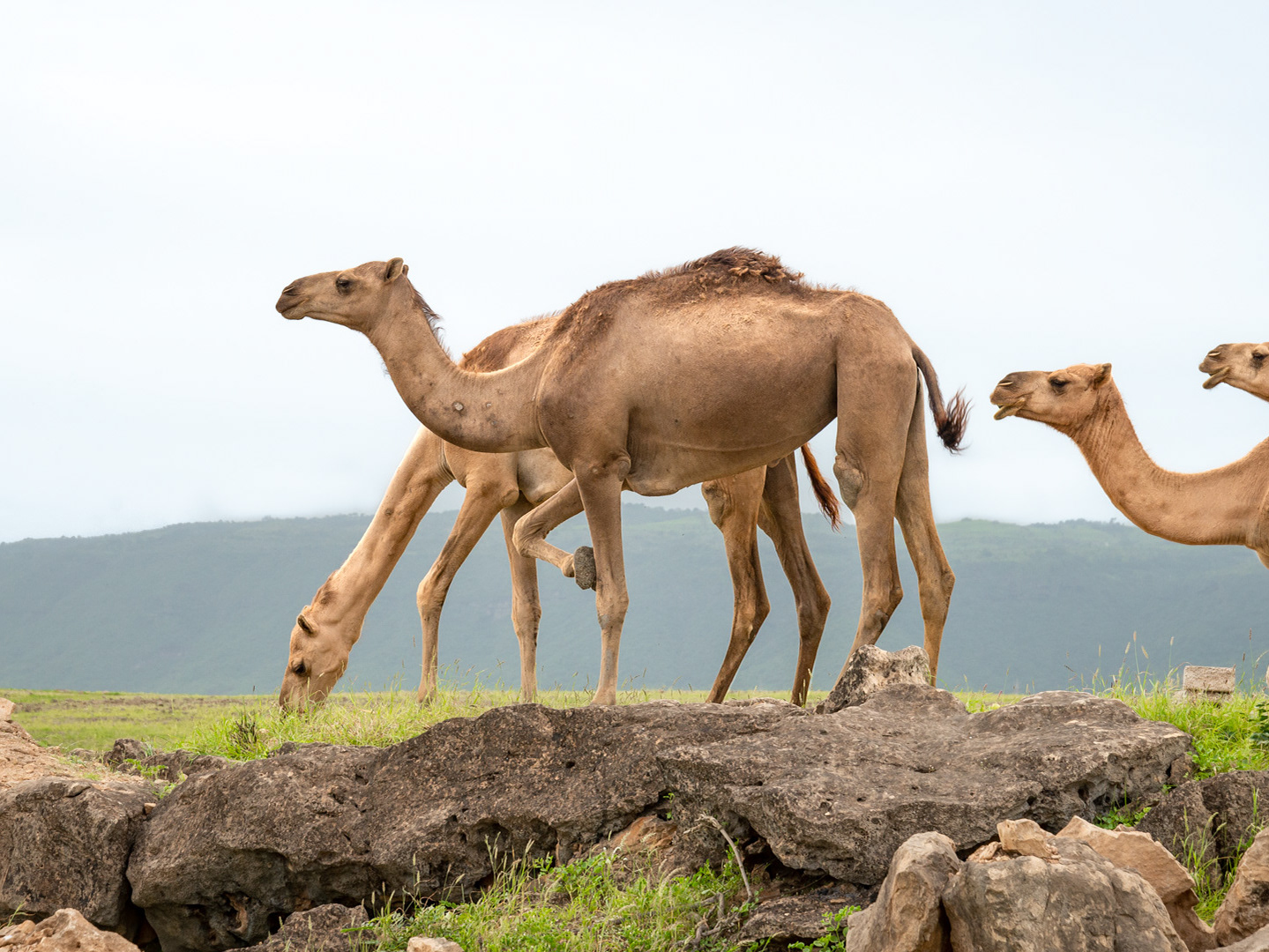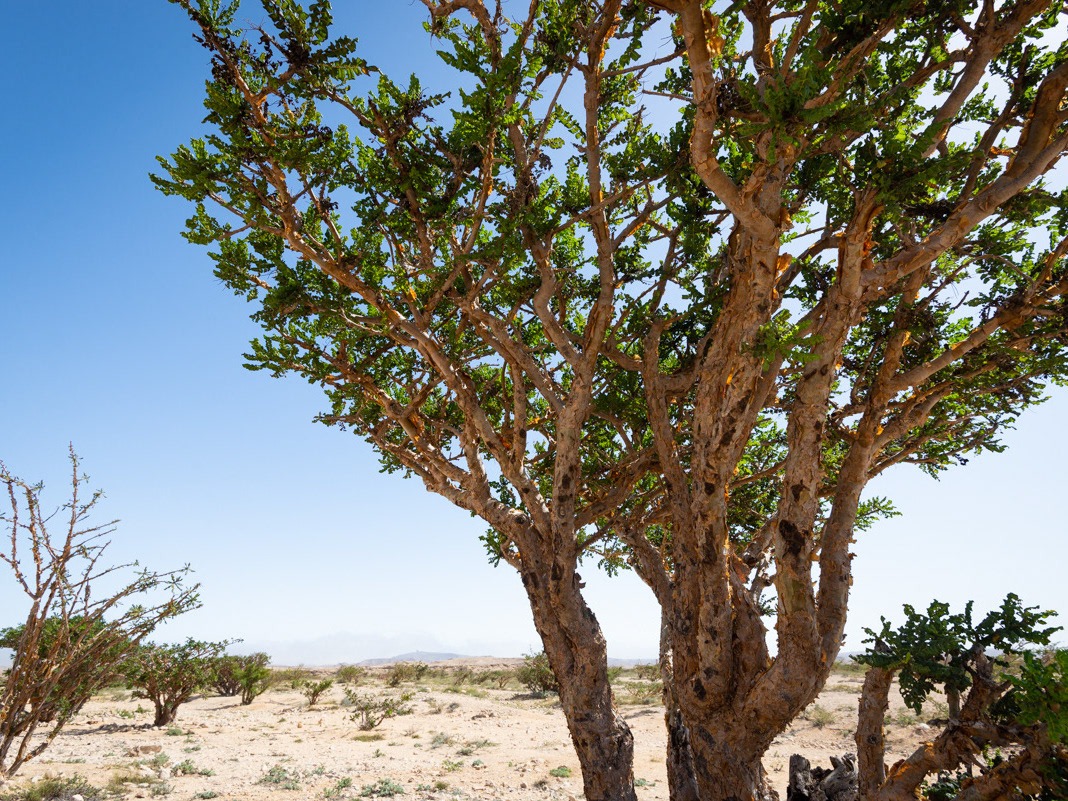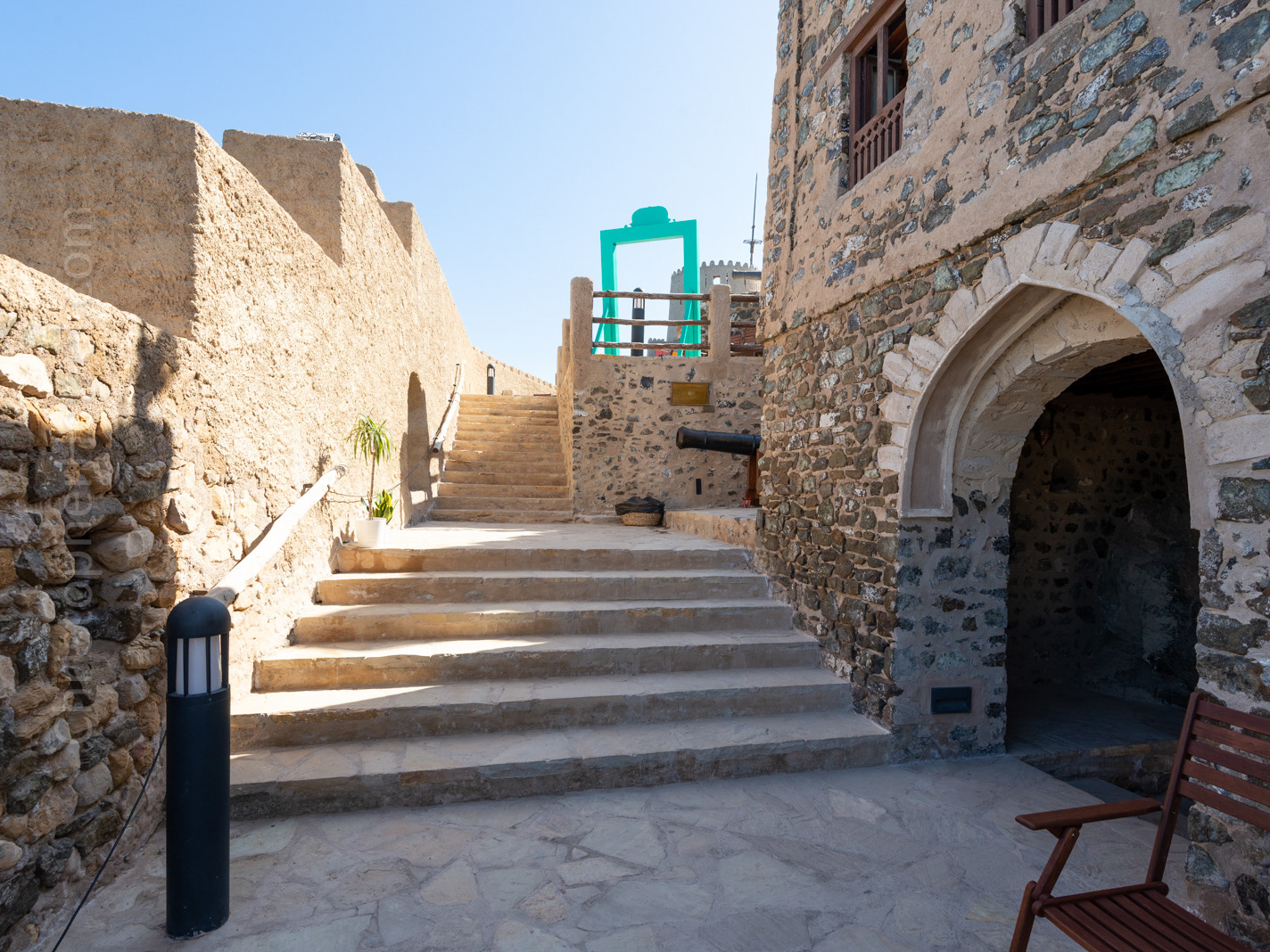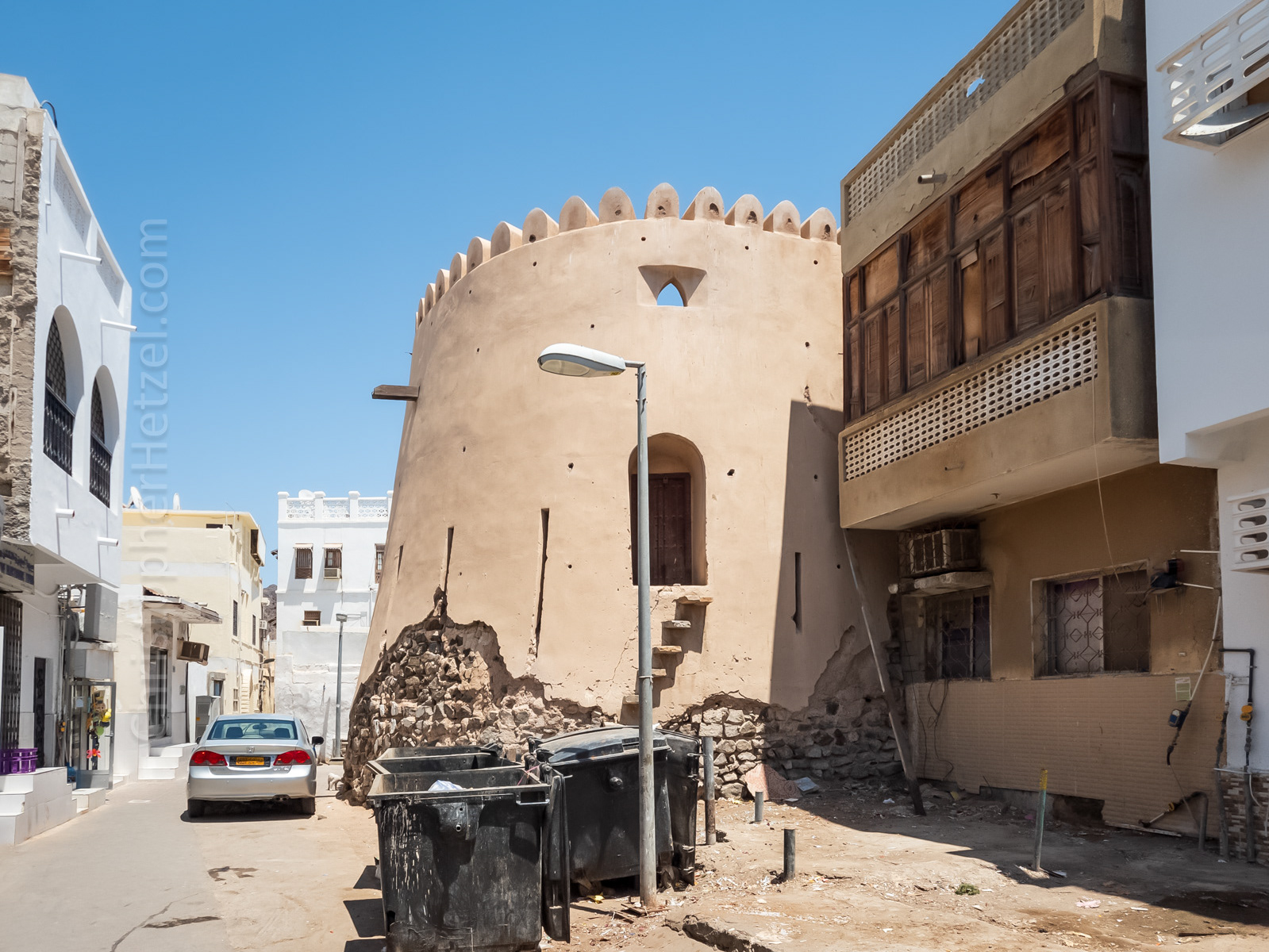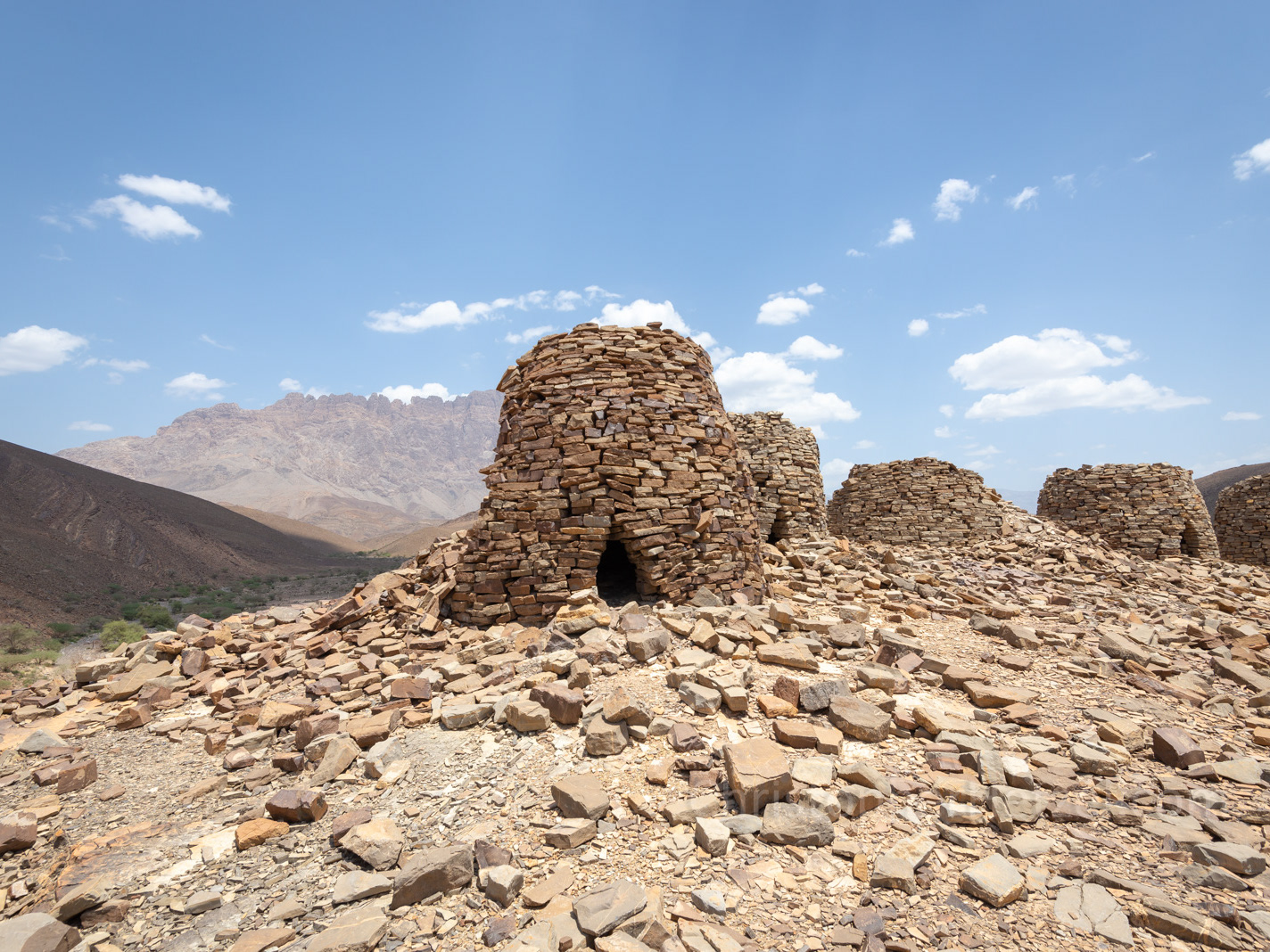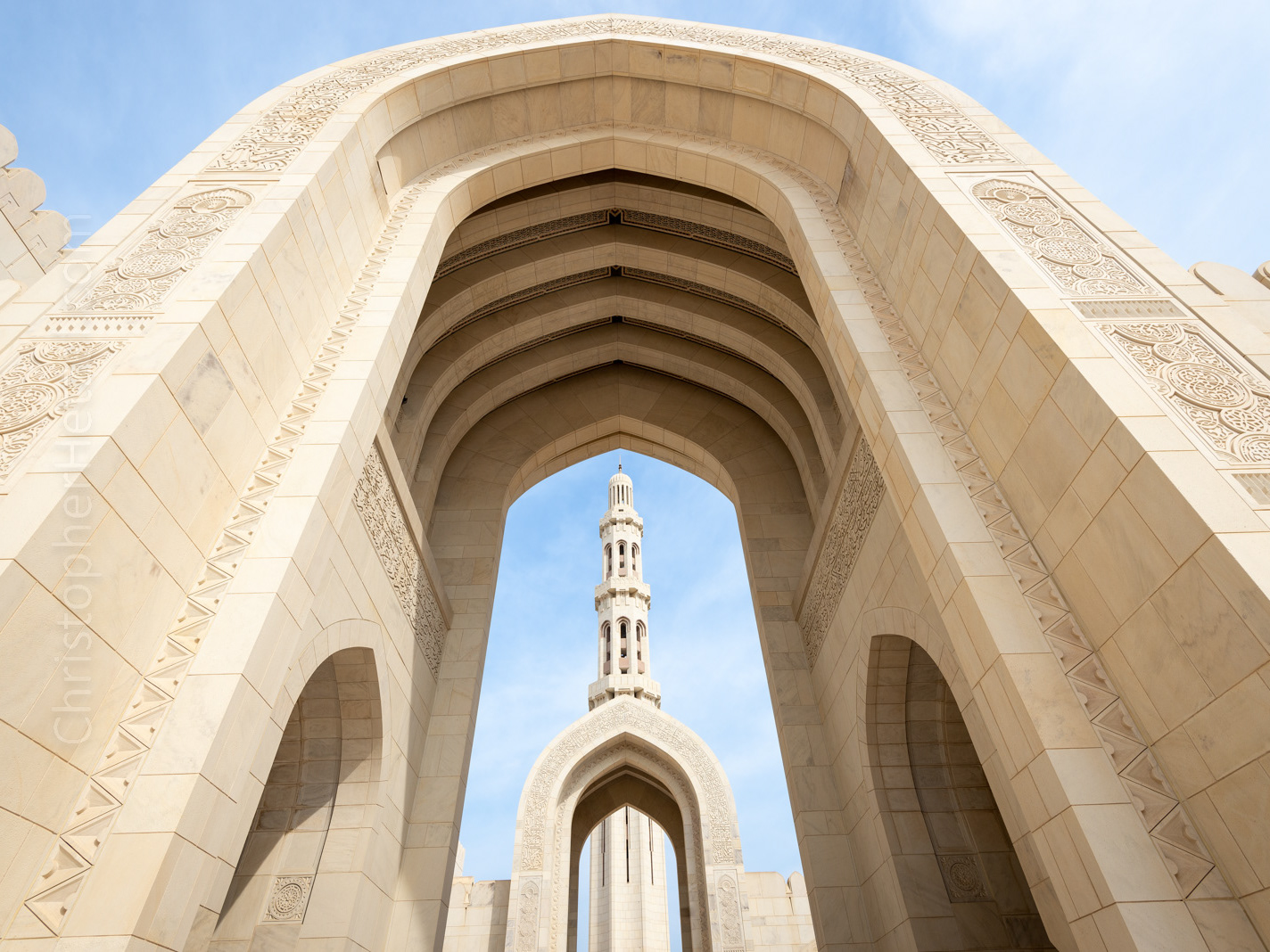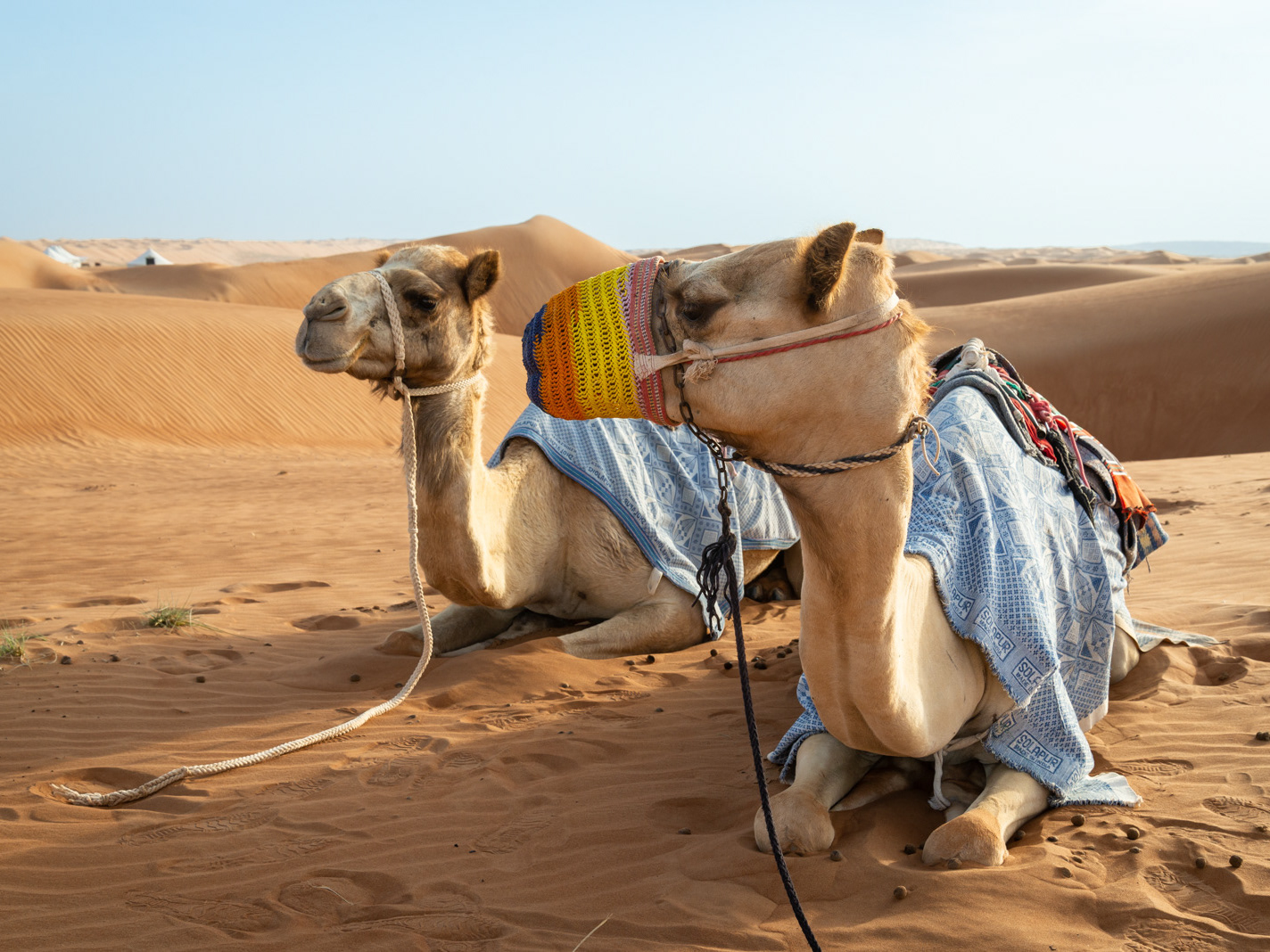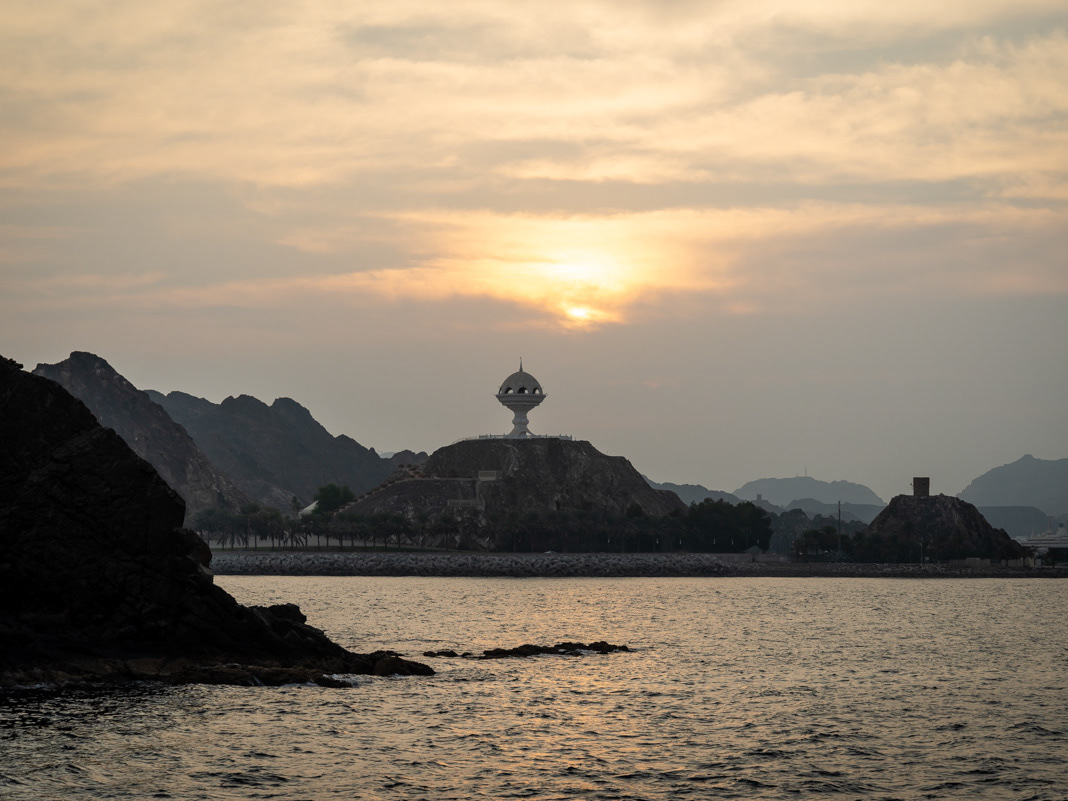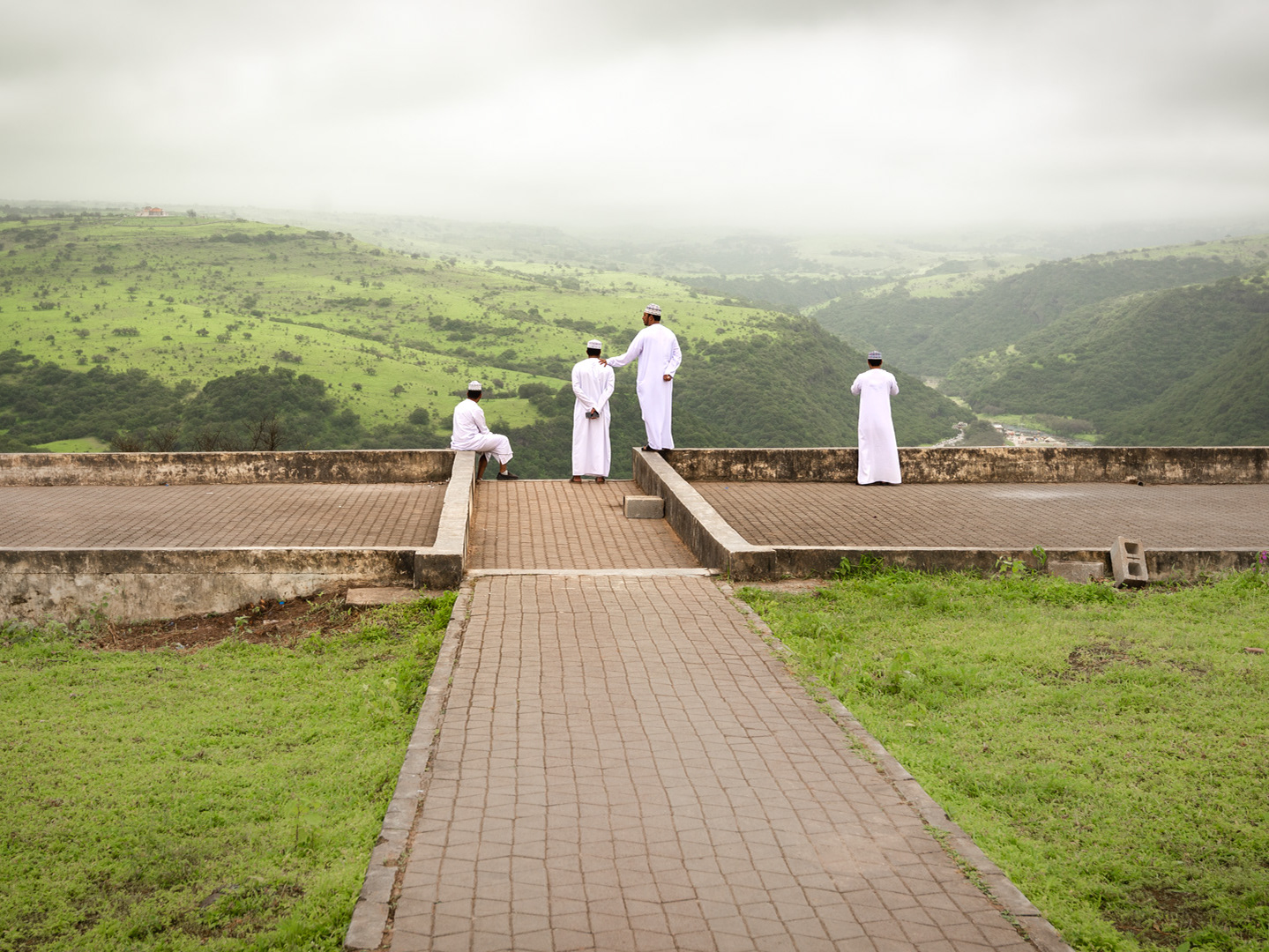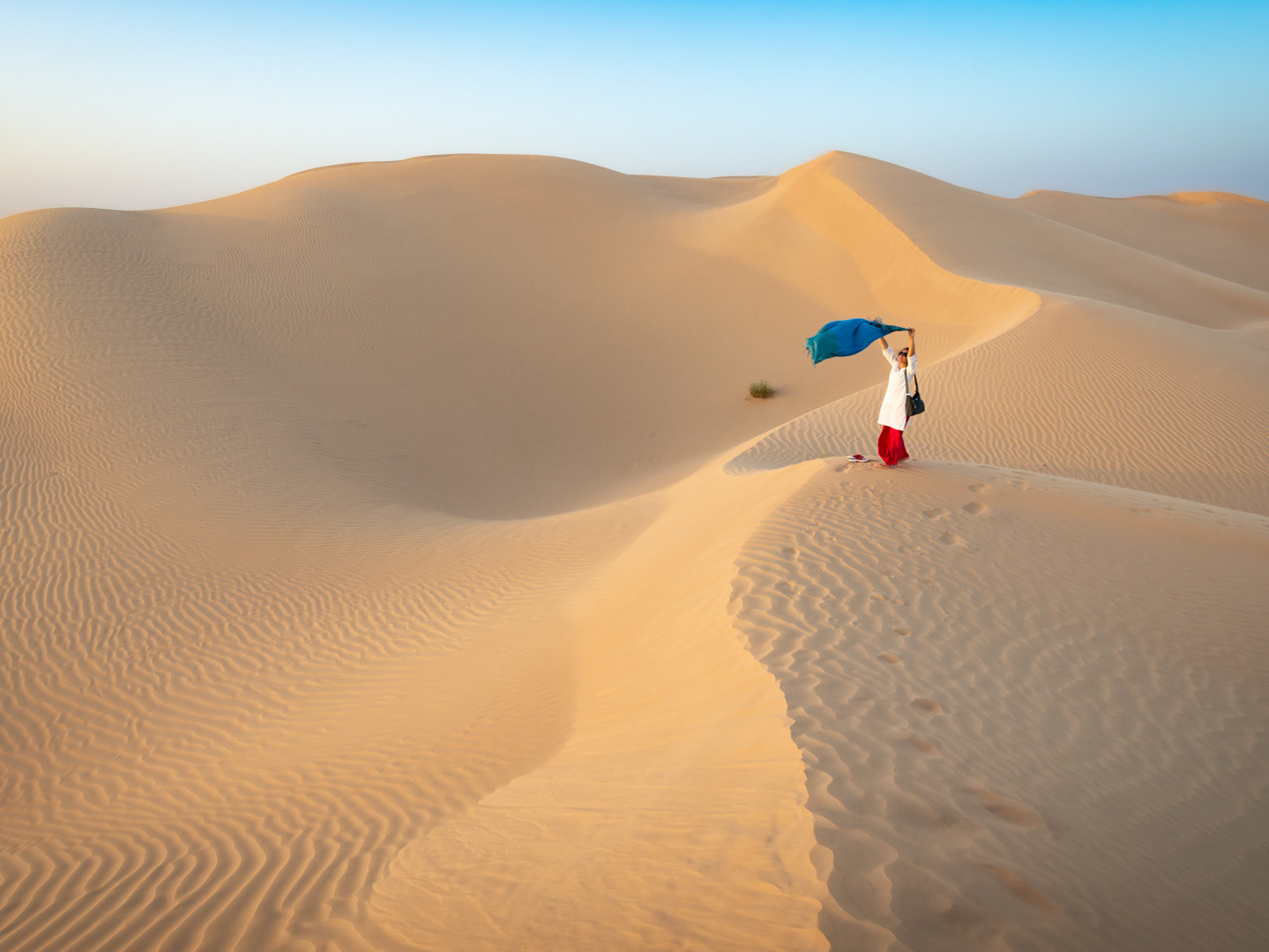The khanjar (الخنجر) is a curved, sheathed dagger, which symbolizes the Omani male identity and is a national symbol of Oman. In the past, it had a practical purpose as a weapon, but today is proudly worn as part of an Omani man's traditional dress, worn on special occasions (such as weddings) and is a required accoutrement for official ceremonies.
The khanjar itself has four main parts: the blade, handle, sheath, and attaching belt, and different skills are required to fashion each. A khanjar's value is primarily determined by the material used in crafting its handle and sheath, and the quality of its blade.
Daggers have been used in Oman since at least the 3rd millennium BC, serving both ceremonial and practical purposes. The exact origins of the khanjar's iconic curved blade is unknown, but literary and pictorial evidence suggests it was developed in the 15th to 16th centuries AD. According one early account, representatives of the Dutch East India Company described Imam Sultan bin Saif al-Yarubi as possessing one, during a meeting with the Imam in 1672 AD: "His Highness...had a belt around his middle, in which he wore a dagger which was crosswise covered with silks and yarns."
The khanjar is so central to Omani identity that it is a primary element of the Omani national emblem (الشعار الوطني). The Omani national emblem, which is featured on the Omani flag and currency, consists of a khanjar
superimposed on two crossed, curved swords. The emblem is said to stand as a reminder of the "historic battles waged to build the peaceful and prosperous nation that is Oman today."
Pictured here is the Omani national emblem and a "Saidi-style Khanjar," which Jennifer and I saw exhibited in the Oman National Museum. From northern Oman, the khanjar dates to the 19th century AD and is made of steel, wood, silver, horn, leather, and felt. According to the exhibit text:
"This sa'idi-style khanjar, named after the royal house of al-Busaid, is characterized by a pommel-shaped hilt and seven-ringed construction. It features a rhinoceros horn hilt and a silver-embroidered leather belt with a cast silver buckle. A cartridge-shaped tweezers set is affixed to the belt and an auxiliary knife is fitted into a leather sheath on the back of the scabbard. The decoration on the hilt and the scabbard of the khanjar include chased, stamped and applied work, filigree and granulation."
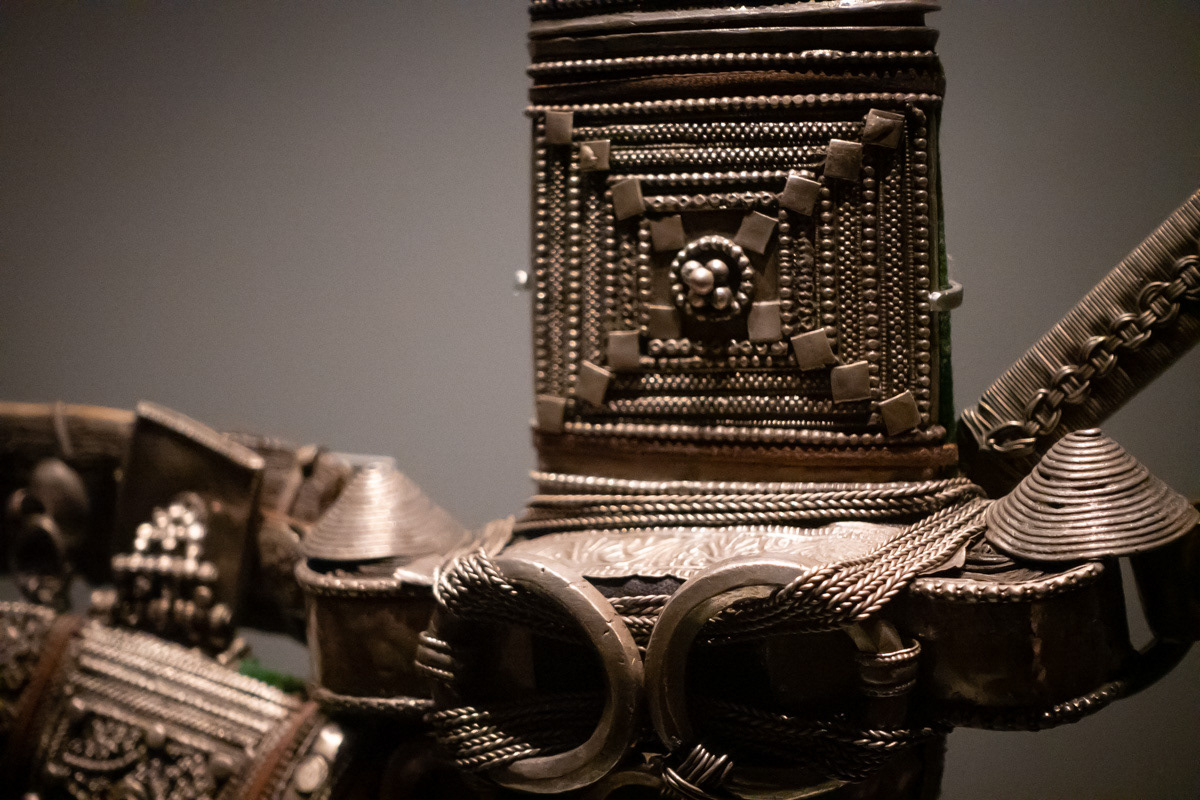
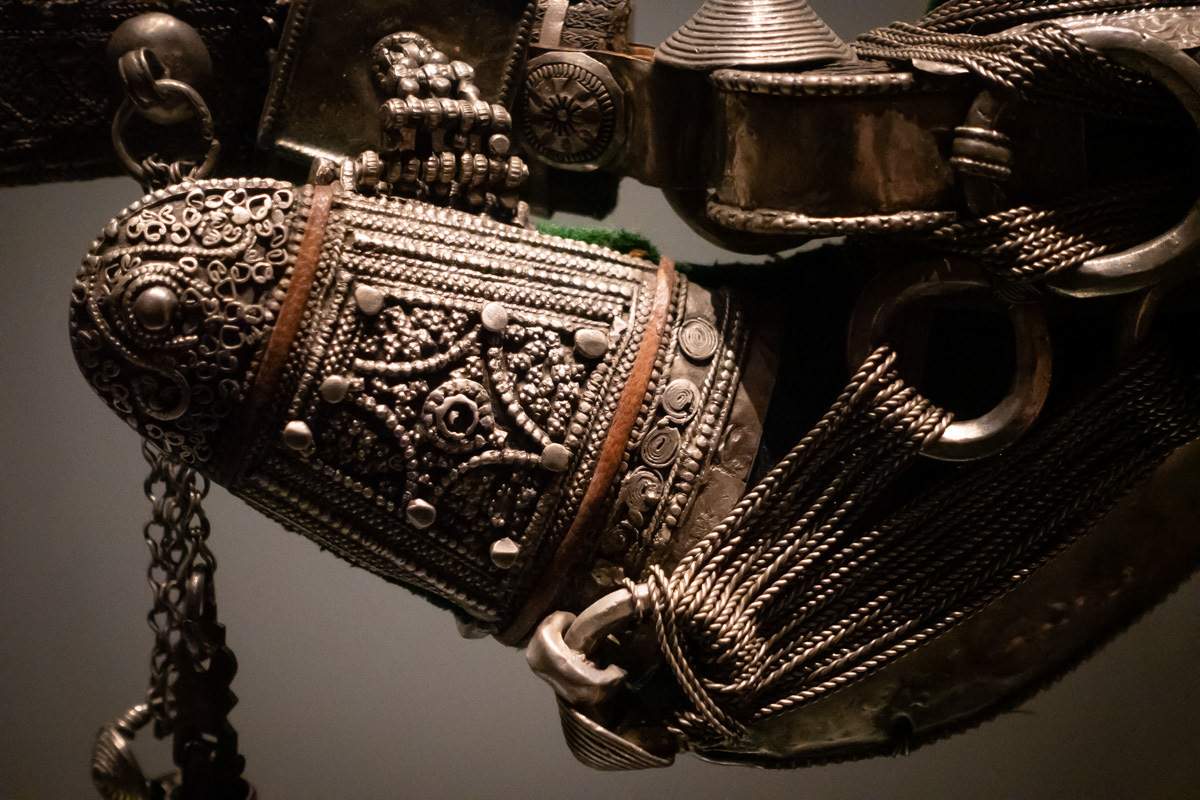
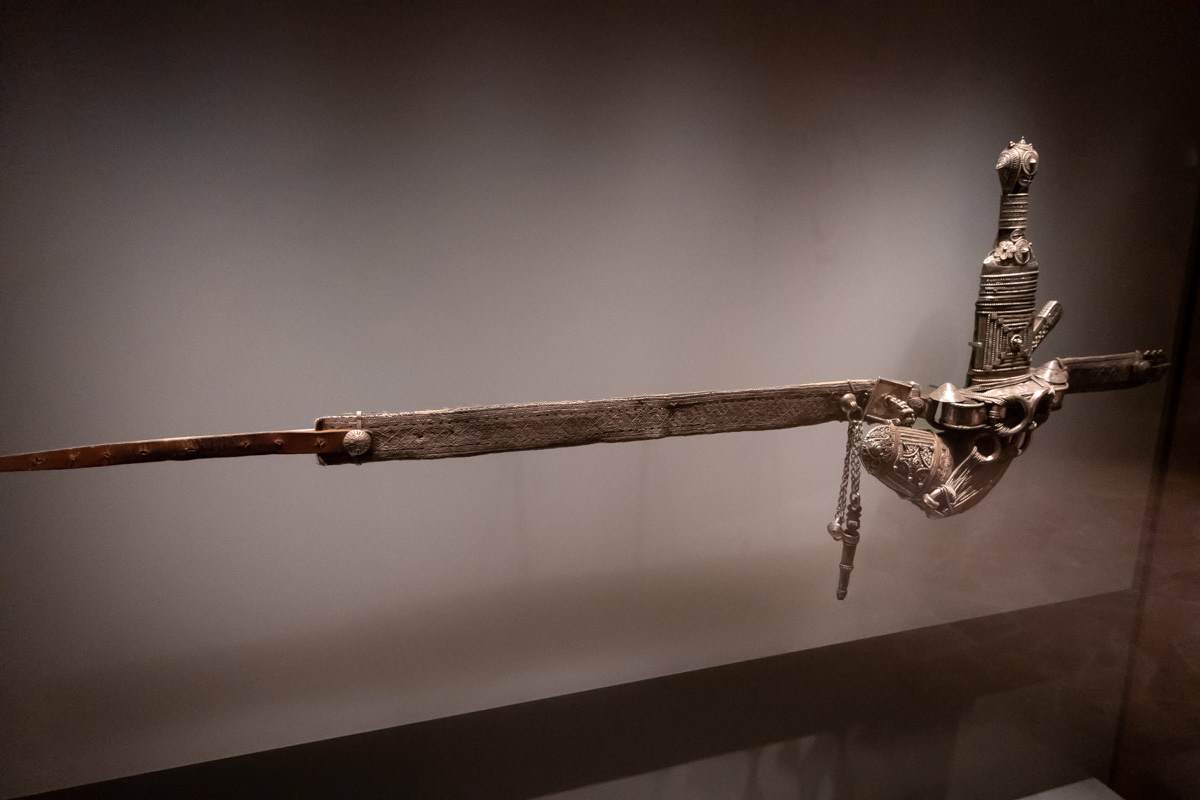
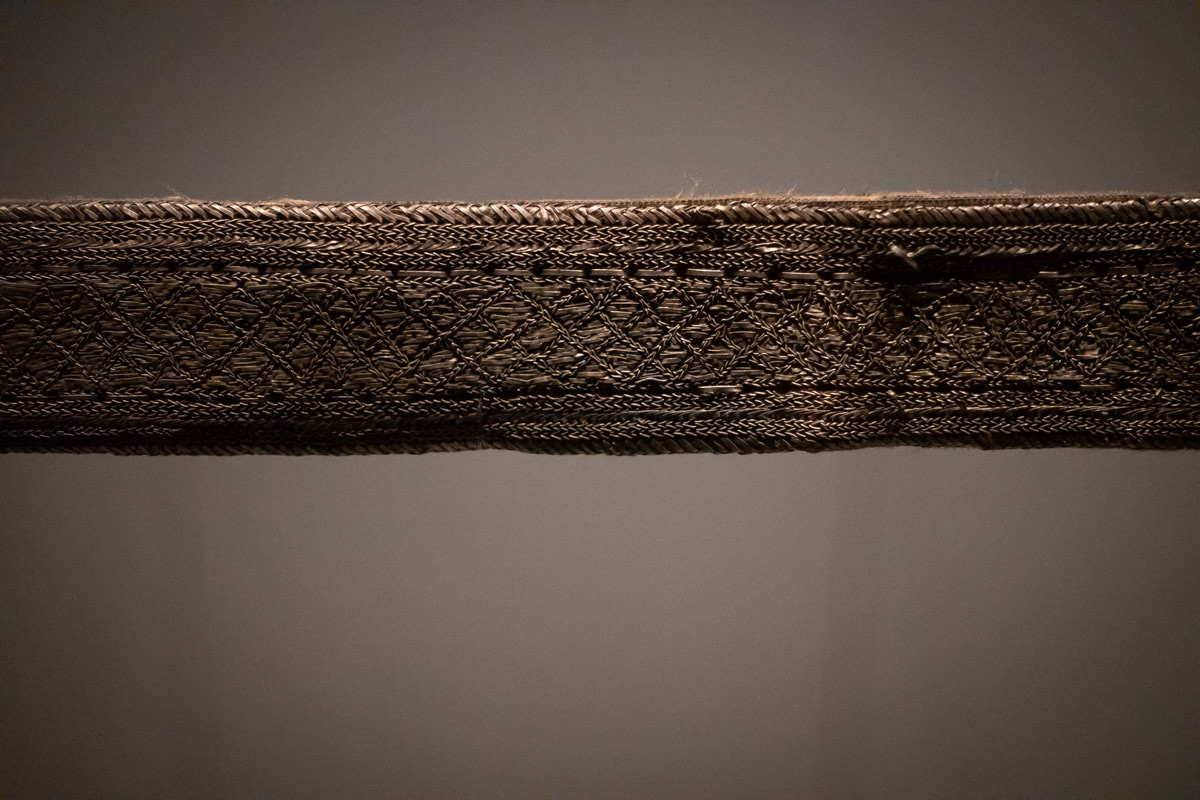
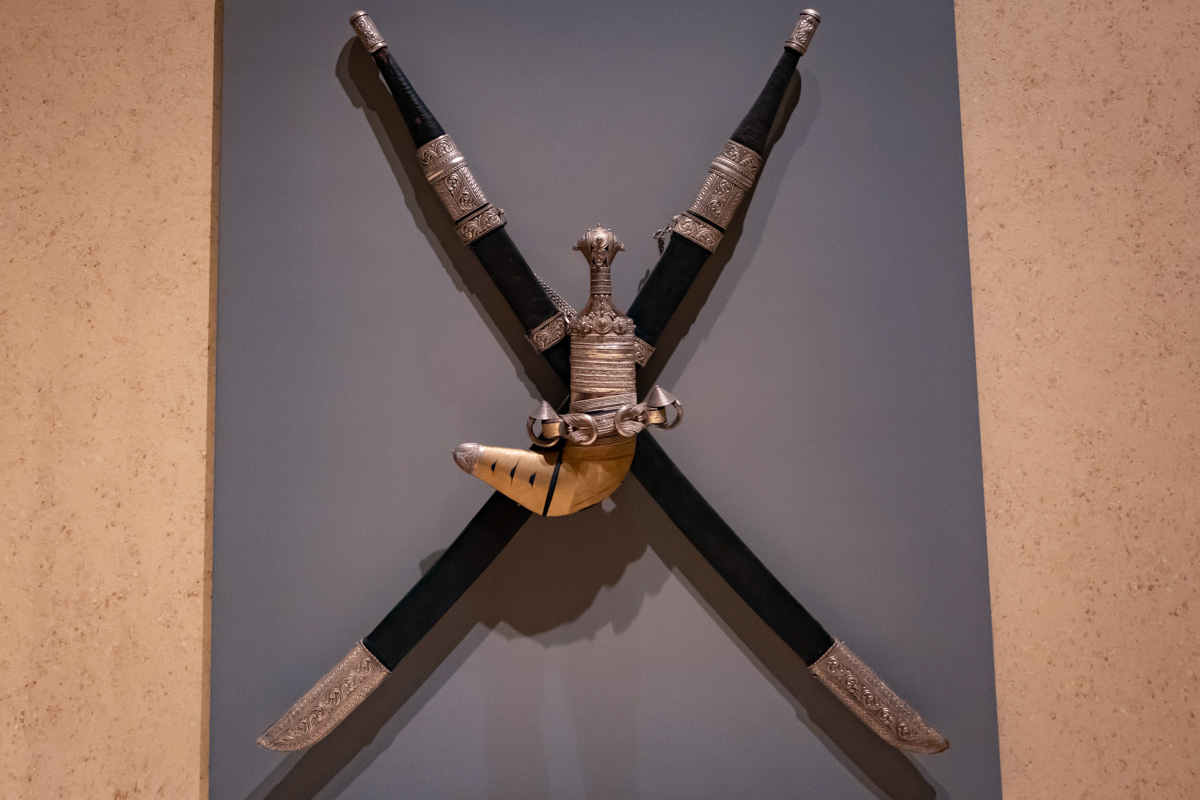
Back to Oman
